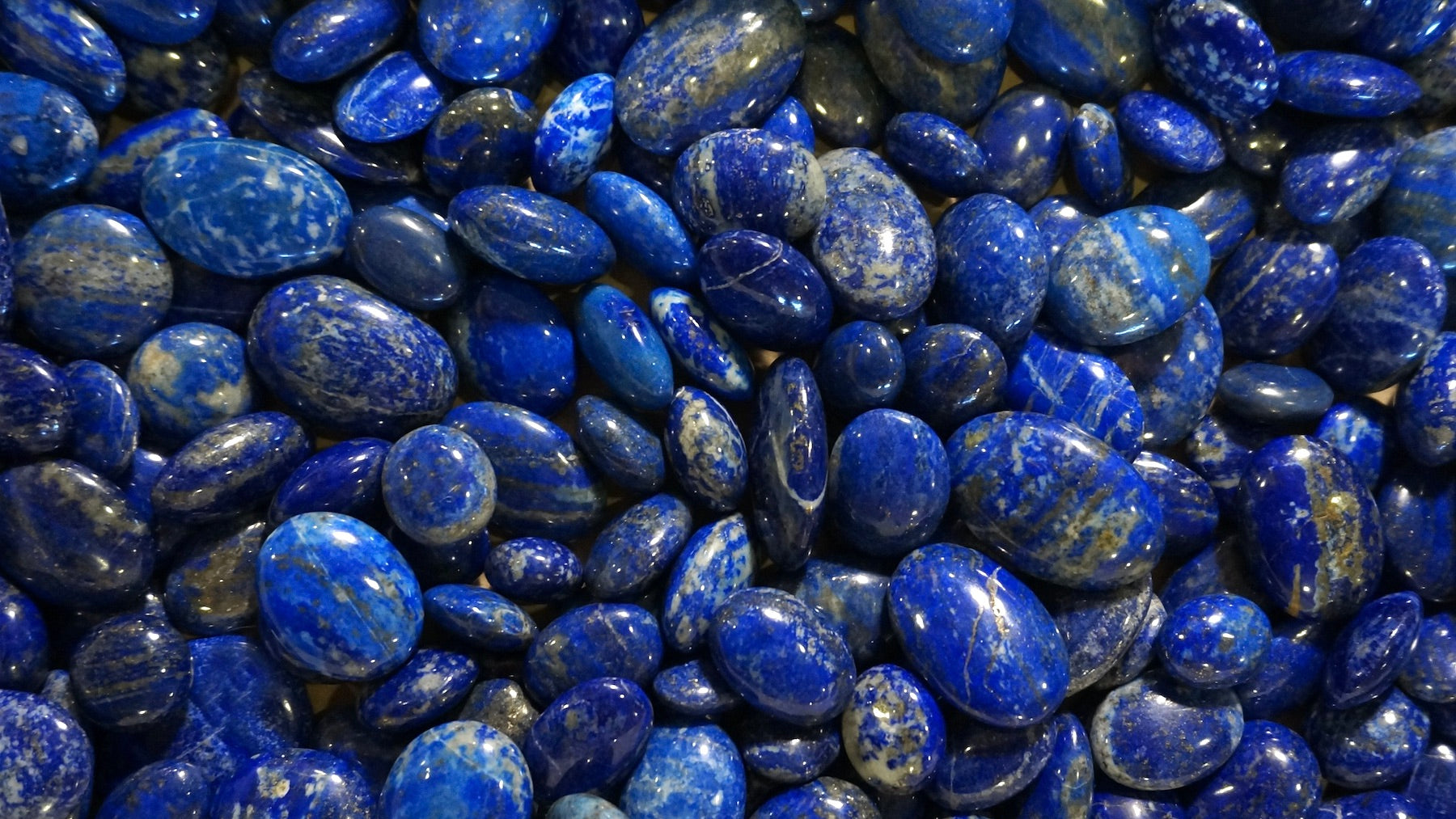
Lapis lazuli: From Beyond the Sea
History and Origin

Lapis Lazuli, often referred to simply as lapis, has a rich history dating back thousands of years. The name "lapis" is derived from the Latin word for "stone," while "lazuli" comes from the Persian word "lazhuward," meaning "blue." This deep blue gemstone has been prized by ancient civilizations, including the Egyptians, Sumerians, and Babylonians, who used it for jewelry, amulets, and as a pigment. It was considered a sacred stone, associated with royalty and deities, and often used in burial masks and other ceremonial objects. Lapis has been mined since the 3rd millennium BC, has been traded and made into jewelry since ancient Mesopotamia by the Sumerians, Akkadians, Assyrians and Babylonians. Lapis jewelry has been found in Predynastic Egyptian site of Naqada (3300-3100 Bc). And not only was it used in jewelry during that time but also as eyeshadow by Cleopatra. Lapis is mainly composed of lazurite but also has calcite (white), sodalite (blue) and pyrite, or fool's gold (metallic) minerals in its formation. This beautiful blue mineral has been ground into fine powder to produce ultramarine pigment, the most expensive and sought-after blue pigment in Renaissance art. Ultramarine pigment was used by artists like Johannes Vermeer's The Girl with a Pearl Earrings painting done it 1665. The name ultramarine means "from beyond the sea," alluding to the trade route from Afghanistan to the Mediterranean and beyond. Lapis Lazuli is primarily mined in the Badakhshan province of Afghanistan, where it has been sourced for thousands of years. Other notable deposits are found in countries such as Chile, Russia, and Pakistan.
Hardness and Uses
Lapis Lazuli has a Mohs hardness rating of 5 to 5.5, which means it is relatively soft compared to other gemstones and requires careful handling to avoid scratches and damage. Despite its softness, lapis is widely used in a variety of decorative and practical applications. It is commonly found in cabochons, beads, and inlays for jewelry.
Significance and Uses
Lapis Lazuli holds significant cultural and spiritual importance. It is often associated with truth, wisdom, and inner peace. In ancient Egypt, lapis was believed to provide protection in the afterlife and was used to decorate the tombs of pharaohs, including the famous burial mask of Tutankhamun. In metaphysical practices, lapis is thought to enhance intellectual ability, stimulate the desire for knowledge, and promote effective communication. Its deep blue color is also said to align with the throat chakra, aiding in self-expression and clarity. Lapis continues to be a popular choice for jewelry and decorative objects, symbolizing a connection to history and spirituality.
How to Care for Lapis Jewelry

Caring for lapis jewelry requires gentle handling due to its relative softness. To clean lapis, use a soft, damp cloth and avoid harsh chemicals, ultrasonic cleaners, and steamers, which can damage the stone. It is best to store lapis pieces separately from harder gemstones to prevent scratching. When wearing lapis jewelry, avoid exposing it to prolonged heat or direct sunlight, as well as household chemicals like bleach or acid, which can alter its color and structure. Regularly checking the setting and securing any loose stones can also help maintain the beauty and integrity of lapis jewelry over time.
Discover the beauty of lapis with our collection of Lapis Jewelry.
